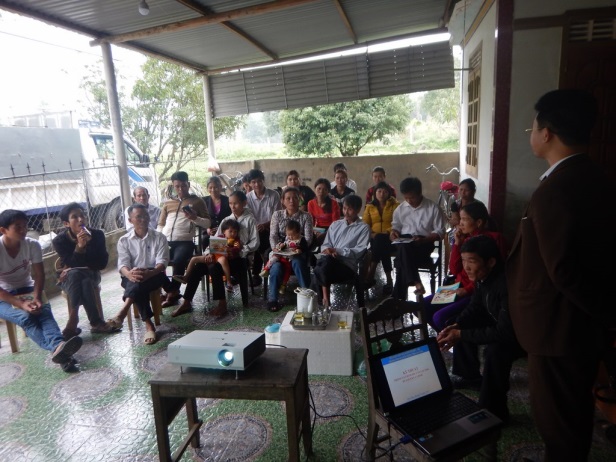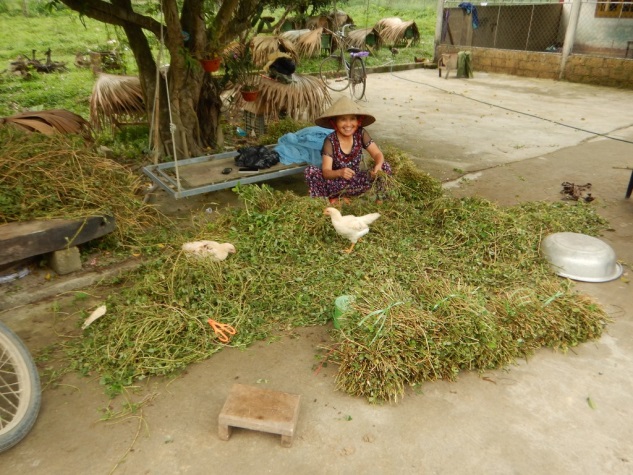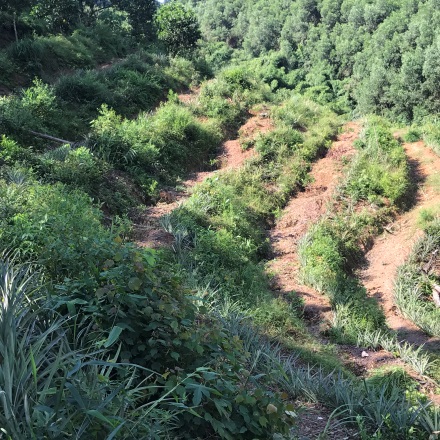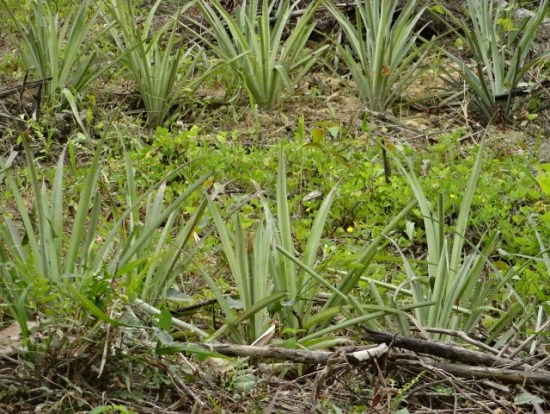




This planting started in 2017 March for:
i) reducing runoff and erosion in the steep orange fields,
ii) keeping moisture content high for orange trees,
iii) protecting the top soil layer,
iv) increasing soil fertility, and
v) minimizing grass cover that competes with orange trees.
Thus, this mixed planting can provide a number of services to growers, such as fruits from orange trees and pineapples for income, fodder for animals and materials from pinto peanut for compost and improvement of soils.
12 households participated in this planting. They were selected from community meetings based on criteria (committment, site characteristics, labor force). Two members each household were invited for the in-class technical training on doing this planting. Trainers provided planting techniques in localized discussions and lessons learnt. Farmers were also offered on-hand practical part in their own orange fields for the detailed and real application.
Pineapples were planted as contours between orange rows, by serrated planting to ensure erosion control function. Pinto peanut - a nitrogen fixing plant - was planted between trees. The survival rate is almost 100%, pineapples already offered the first fruits. This activity is continuously taken care of and checked by farmers.
- One of the success factors of this planting was communicating its values to farmers. Because pinto peanut was completely new to farmers and commune staff, many felt reluctant to apply it. Technicians and the project team implemented good practices to show locals.
- A second factor was that technicians used traditional knowledge in training, which helped farmers understand this approach.
- Frequent checks were offered to support farmers and motivate them for their hard work.
- Planting pineapples and pinto peanut as contoursr in orange fields is more time-consuming than cultivating orange trees without anything in between.
- Farmers had to do many different tasks to get pineapples planted in serrated rows and pinto peanut planted in beds. Thus, information on technical requirements should be clearly explained to farmers in the beginning.
- First time application should not cover too many households.
- This application is new to farmers, so frequent checks are very important to make sure they stay interested and commit to the work.
- The third lesson is involving a local institute (the agroforestry unit in this case) to enable the introduction and replication among other farmers and areas where possible.
- Participating households should be carefully selected because households with many livelihood opportunities might not participate because they will focus on activities for good income, rather than this approach which mainly provides environmental value rather than increased income.